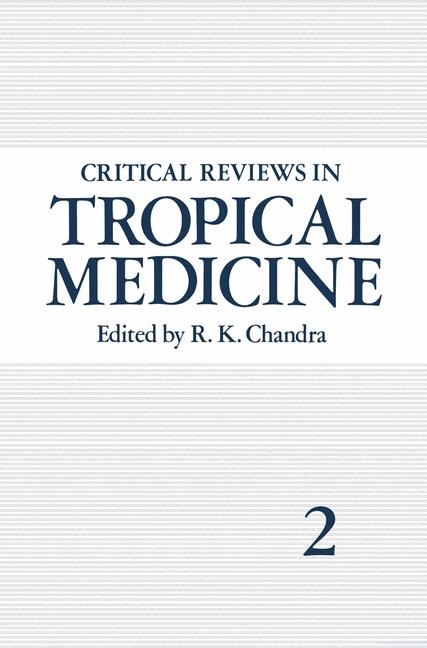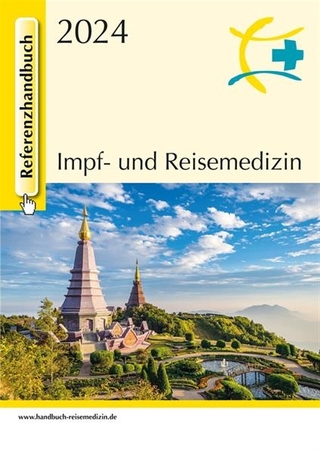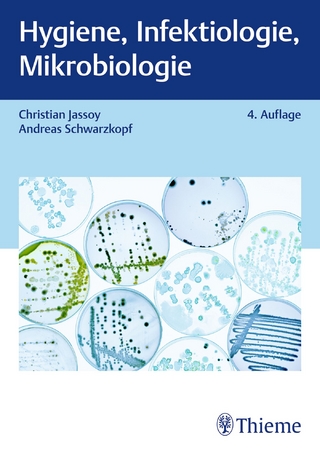
Critical Reviews in Tropical Medicine
Kluwer Academic/Plenum Publishers (Verlag)
978-0-306-41561-6 (ISBN)
- Titel ist leider vergriffen;
keine Neuauflage - Artikel merken
At the present time there are renewed global efforts to control the major tropical infections and to stem the tide of malnutrition, the two serious, often intertwined, problems that contribute to much of the morbidity and mortality in under- privileged populations. Many international organizations have joined hands with national governments and with the private sector to search for new approaches to problems that beset much of the developing world, including countries in the tropical region. This volume continues the tradition of the previous publication in the Series. A variety of fare is offered to readers: explanations of the activities and achievements of the UNDP/World Bank/WHO Special Programme for Re- search and Training in Tropical Diseases; and studies of infant mortality, schistosomiasis, trypanosomiasis, helminths, lactase deficiency, oral rehydration therapy, functional consequences of iron deficiency, and fertility control. Au- thoritative state-of-the-art reviews provide a critical analysis of recent data. I hope the Series will continue to prove useful to all those working in the tropics and to those in the industrialized countries whose awareness of physical health problems of the Third World is relatively limited. R. K. Chandra St. John's, Newfoundland VlI Contents Chapter 1. The Special Programme for Research and Training in Tropical Diseases . . . . . . . . . . . . . . . . . . . DAVID S. ROWE 1. Origins, Objectives, and Diseases. . . . . . . . . . . . . . . . . . . . . . . . . . . 1 2. The Modus Operandi of the Programme. . . . . . . . . . . . . . . . . . . . . . 3 2. 1. Scientific Working Groups. . . . . . . . . . . . . . . . . . . . . . . . . . . . 3 2. 2. Research Strengthening Group. . . . . . . . . . . . . . . . . . . . . . . . . 7 2. 3. The Scientific and Technical Advisory Committee. . . . . . . . . 7 2. 4. Joint Coordinating Board. . . . . . . . . . . . . . . . . . . . . . . . . . . . .
1. The Special Programme For Research And Training In Tropical Diseases.- 1. Origins, Objectives, and Diseases.- 2. The Modus Operandi of the Programme.- 2.1. Scientific Working Groups.- 2.2. Research Strengthening Group.- 2.3. The Scientific and Technical Advisory Committee.- 2.4. Joint Coordinating Board.- 2.5. The Executing Agency.- 2.6. Budget.- 3. Research and Development.- 3.1. Malaria.- 3.2. Schistosomiasis.- 3.3 Filariasis.- 3.4. African Trypanosomiases.- 3.5. Chagas’ Disease.- 3.6. Leprosy.- 3.7. Leishmaniasis.- 3.8. Epidemiology.- 3.9. Biomedical Sciences.- 3.10. Biological Control of Vectors.- 3.11. Social and Economic Research.- 4. The Strengthening of Research Capability.- 5. Field Research.- 6. Collaboration with Other Funding Agencies.- 7. Collaboration with Industry.- 8. Information on the Programme’s Activities.- 9. An Interim Assessment.- 2. Infant and Child Mortality in Developing Countries.- 1. Introduction.- 2. Measuring Early-Age Mortality.- 3. Data Sources.- 3.1. Vital Registration.- 3.2. Censuses and Surveys.- 3.3. Surveillance Systems.- 4. The Age Pattern of Mortality.- 5. Early-Age Mortality Levels.- 5.1. Africa.- 5.2. Latin America.- 5.3. Asia.- 5.4. Summary.- 6. Early-Age Mortality Trends.- 6.1. Africa.- 6.2. Latin America.- 6.3. Asia.- 6.4. Summary.- 7. Early-Age Mortality and Levels of Per Capita Income.- 8. Intracountry Variation.- 8.1. Regional Variation.- 8.2. Urban-Rural Variation.- 8.3. Maternal Education.- 8.4. Birth Order, Birth Interval, and Maternal Age.- 8.5. Breast-Feeding.- 8.6. Birth Weight.- 8.7. Single or Multiple Births.- 8.8. Sex of Child.- 9. Causes of Early-Age Deaths.- 10. Synergistic Interrelations with Malnutrition.- 11. Further Factors.- 11.1. Water and Toilet Facilities.- 11.2. Health Service Availability.- 11.3. Climatic Seasonality.- 12. Infant versus Child Mortality.- 13. Conclusion.- References.- 3. Oral Rehydration Therapy.- 1. Introduction.- 2. Evolution of ORT.- 2.1. Early Empirical Use of ORT.- 2.2. Glucose-Linked Enhanced Sodium Absorption and Its Early Application in ORT.- 2.3. A Critical Look at the Scientific Basis of ORT.- 2.4. Oral Rehydration Formulation.- 3. ORT in the Community.- 4. ORT and Feeding Practices.- 5. ORS as an Absorption-Promoting Drug.- 5.1. Clinical Studies Supporting the Postulate.- 5.2. Future Prospects.- References.- 4. Functional Consequences of Iron Deficiency: Nonerythroid Effects.- 1. Immunocompetence and Infection.- 1.1. Immune Responses.- 1.2. Iron Status and Incidence of Infections.- 1.3. Iron Administration, Bacterial Growth, and Infection.- 2. Gastrointestinal System.- 3. Thermoregulation.- 4. Physical Work Capacity.- 4.1. Respiratory and Cardiovascular Adjustments.- 4.2. Human Studies.- 4.3. Animal Studies.- 4.4. Additional Comments.- 5. Cognition and Behavior.- References.- 5. Hypolactasia: Geographical Distribution, Diagnosis, and Practical Significance.- 1. Geographical Distribution of Primary (Genetically Determined) Hypolactasia and Persistence of Lactase.- 1.1. Distribution of PL in the Indian Subcontinent.- 1.2. Distribution of PL in Northern Africa.- 1.3. Distribution of PL in Europe.- 1.4. Incidence of PL in Southeast Asia, the Pacific, and Australia.- 1.5. Incidence of PL in Children in Population Groups with a High Incidence of Adult Hypolactasia.- 2. Explanations for the Survival of PL.- 2.1. The Culture-Historical Hypothesis.- 2.2. The Calcium-Absorption Hypothesis.- 2.3. The Water-Absorption Hypothesis.- 2.4. The Weaning-Time Hypothesis.- 2.5. The Linkage-Disequilibrium Hypothesis.- 2.6. The Rotavirus Receptor and Uncoating Hypothesis.- 2.7. Protection against Colonic Infections.- 2.8. Resistance to Systemic Infections.- 2.9. Synthesis of the Various Hypotheses.- 3. Genetics and Possible Undesirable Effects of PL.- 3.1. Atherosclerosis.- 3.2. Cataract Formation.- 4. Secondary (Acquired) Hypolactasia.- 4.1. Small-Intestinal Infections and Malignancy.- 4.2. Malnutrition.- 4.3. Dietary Depression of Lactase Concentration.- 4.4. Miscellaneous Small-Intestinal Diseases.- 5. Clinical Significance of Hypolactasia.- 5.1. Symptoms Attributable to Hypolactasia.- 5.2. Effect on Other Nutrients.- 5.3. Lactose and Milk Supplements in the Presence of Hypolactasia.- 5.4. Alleviation of Symptoms Associated with Hypolactasia.- 5.5. Management of Portal-Systemic Encephalopathy in Hypolactasia.- 5.6. Advantage of Hypolactasia in Reducing Intestinal Lead Absorption.- 5.7. Importance of Falling Lactase Concentration in Infant Malnutrition.- 6. Adaptation to Hypolactasia.- 6.1. Upper Gastrointestinal Factors in Adaptation.- 6.2. Colonic Adaptation.- 7. Diagnosis of Lactase Status.- References.- 6. Immune Response to Leishmania.- 1. Leishmania and Leishmaniasis.- 1.1. The Parasite.- 1.2. The Clinical Forms.- 2. The Immune Response of Man in Various Leishmanial Infections...- 2.1. Immune Response in Cutaneous Leishmaniasis.- 2.2. Immune Response in Mucocutaneous Leishmaniasis.- 2.3. Immune Response in Visceral Leishmaniasis.- 2.4. Immune Response in Aberrant Forms of Leishmaniasis.- 2.5. The Spectral Concept in Leishmaniasis.- 3. The Experimental Models of Leishmaniasis and Their Relevance to the Disease in Man.- 3.1. Genetics of Resistance and Susceptibility in Animal Models..- 3.2. Cutaneous Leishmaniasis.- 3.3. Visceral Leishmaniasis.- 4. Immune Response in Experimental Models of Infection.- 4.1. Immune Response of the Guinea Pig.- 4.2. Immune Responses of the Mouse.- 4.3. Miscellaneous.- 4.4. Assessment of the Role of Suppressor T Cells in the Outcome of the Disease.- 5. In Vitro Analysis of CMI Responses.- 5.1. The T Lymphocytes.- 5.2. The Killing of Leishmania by Macrophages.- 6. Analysis of Humoral Response to Leishmania Parasite.- 7. Conclusion.- References.- 7. Immunological Alterations in Chagas’ Disease.- 1. The Parasite and the Disease.- 2. Immunity to T. cruzi.- 2.1. Natural Immunity.- 2.2. Acquired Immunity.- 3. Immunity to T. cruzi and Pathogenesis.- 3.1. Autoimmunity in T. cruzi Infections.- 3.2. T. cruzi-Induced Immunosuppression.- References.- 8. Immunity to Helminths and Prospects for Control.- 1. Introduction.- 2. Immunity to Helminths.- 2.1. Immunity in Vivo.- 2.2. Helminths as Antigens.- 2.3. Immune Responses.- 2.4. Restrictions on Immunity.- 2.5. Immunopathology.- 3. Immunologically Based Control.- 3.1. Vaccination against Infection.- 3.2. Vaccination against Transmission.- 3.3. Vaccination against Pathology.- 4. Summary and Conclusions.- References.- 9. Structured Vaccines for Control of Fertility and Communicable Diseases.- 1. Feasibility.- 2. Antifertility Vaccines.- 2.1. The Anti-hCG Vaccine.- 3. Structured Vaccines.- 3.1. Concept of Linkage with Carriers.- 3.2. Adjuvant Conjugation.- 4. Experience with Pr-?-hCG-TT Vaccine.- 4.1. Efficacy.- 4.2. Limitations of Pr-?-hCG-TT.- 4.3. Immunopotentiation by Adjuvants.- 4.4. The Problem of Constitutional Variability.- 5. Immunocontraception with Preformed Antibodies.- References.
| Zusatzinfo | 290 p. |
|---|---|
| Verlagsort | New York |
| Sprache | englisch |
| Gewicht | 570 g |
| Themenwelt | Medizin / Pharmazie ► Medizinische Fachgebiete ► Mikrobiologie / Infektologie / Reisemedizin |
| ISBN-10 | 0-306-41561-5 / 0306415615 |
| ISBN-13 | 978-0-306-41561-6 / 9780306415616 |
| Zustand | Neuware |
| Haben Sie eine Frage zum Produkt? |
aus dem Bereich


